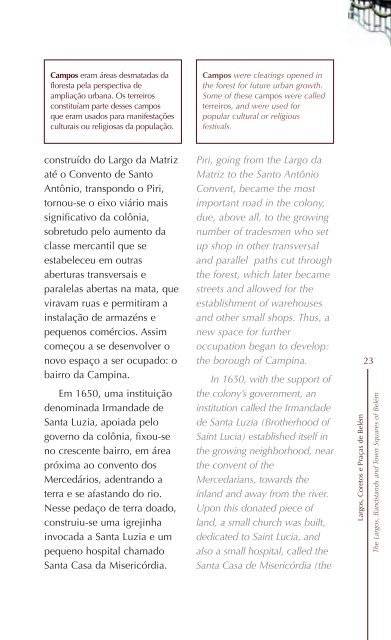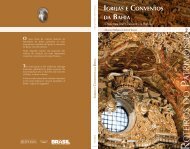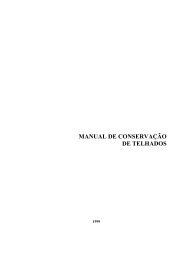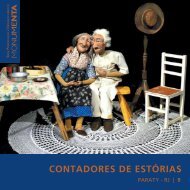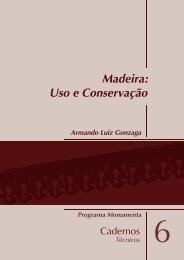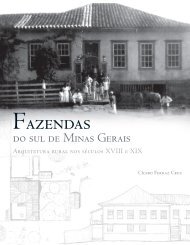LARGOS, CORETOS E PRAÇAS DE BELÉM - Monumenta
LARGOS, CORETOS E PRAÇAS DE BELÉM - Monumenta
LARGOS, CORETOS E PRAÇAS DE BELÉM - Monumenta
Create successful ePaper yourself
Turn your PDF publications into a flip-book with our unique Google optimized e-Paper software.
Campos eram áreas desmatadas da<br />
floresta pela perspectiva de<br />
ampliação urbana. Os terreiros<br />
constituíam parte desses campos<br />
que eram usados para manifestações<br />
culturais ou religiosas da população.<br />
construído do Largo da Matriz<br />
até o Convento de Santo<br />
Antônio, transpondo o Piri,<br />
tornou-se o eixo viário mais<br />
significativo da colônia,<br />
sobretudo pelo aumento da<br />
classe mercantil que se<br />
estabeleceu em outras<br />
aberturas transversais e<br />
paralelas abertas na mata, que<br />
viravam ruas e permitiram a<br />
instalação de armazéns e<br />
pequenos comércios. Assim<br />
começou a se desenvolver o<br />
novo espaço a ser ocupado: o<br />
bairro da Campina.<br />
Em 1650, uma instituição<br />
denominada Irmandade de<br />
Santa Luzia, apoiada pelo<br />
governo da colônia, fixou-se<br />
no crescente bairro, em área<br />
próxima ao convento dos<br />
Mercedários, adentrando a<br />
terra e se afastando do rio.<br />
Nesse pedaço de terra doado,<br />
construiu-se uma igrejinha<br />
invocada a Santa Luzia e um<br />
pequeno hospital chamado<br />
Santa Casa da Misericórdia.<br />
Campos were clearings opened in<br />
the forest for future urban growth.<br />
Some of these campos were called<br />
terreiros, and were used for<br />
popular cultural or religious<br />
festivals.<br />
Piri, going from the Largo da<br />
Matriz to the Santo Antônio<br />
Convent, became the most<br />
important road in the colony,<br />
due, above all, to the growing<br />
number of tradesmen who set<br />
up shop in other transversal<br />
and parallel paths cut through<br />
the forest, which later became<br />
streets and allowed for the<br />
establishment of warehouses<br />
and other small shops. Thus, a<br />
new space for further<br />
occupation began to develop:<br />
the borough of Campina.<br />
In 1650, with the support of<br />
the colony’s government, an<br />
institution called the Irmandade<br />
de Santa Luzia (Brotherhood of<br />
Saint Lucia) established itself in<br />
the growing neighborhood, near<br />
the convent of the<br />
Mercedarians, towards the<br />
inland and away from the river.<br />
Upon this donated piece of<br />
land, a small church was built,<br />
dedicated to Saint Lucia, and<br />
also a small hospital, called the<br />
Santa Casa de Misericórdia (the<br />
Largos, Coretos e Praças de Belém<br />
23<br />
The Largos, Bandstands and Town Squares of Belém


